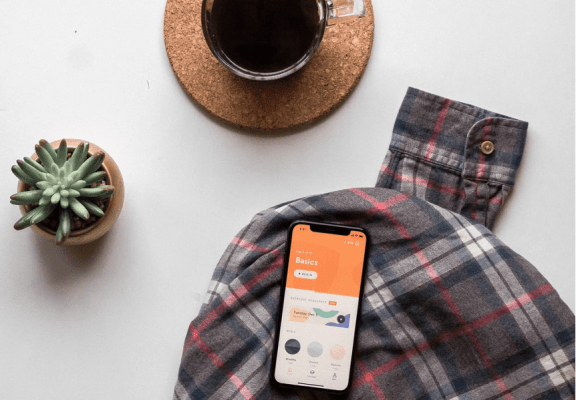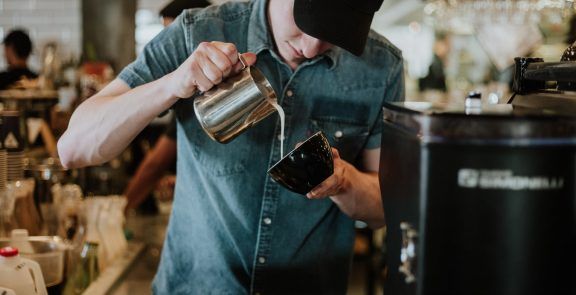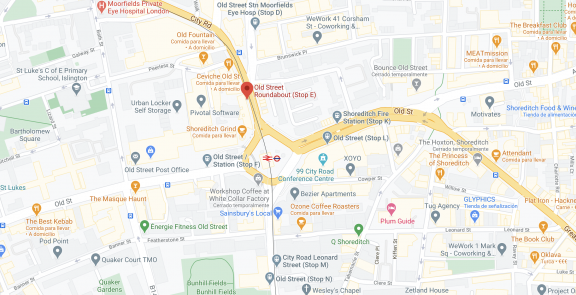

Headspace: Corporate meditation?
IN A NUTSHELL:
In a global society that shares different ailments and illnesses, the business of self-managed well-being is presented as an alternative for many. Its practitioners, regardless of the origin or the specific nature of their discomfort, find in self-care an applicable and shared recipe that is presented as a personalised, segmented, and individual solution.
THE GREAT STRATEGIC TAKEOUT:
A natural evolution in the way in which people approach and pay for products and services that promise to resolve issues linked to physical and mental well-being and happiness in a convenient and contemporary manner:
- Convenience in terms of accessibility.
- Convenience in terms of the apparent absence of “risks” or “complications”.
- Convenience through empathy, closeness, and humanity in the proposal.
- Convenience through “fast acting” solutions.
- Convenience through simplicity and lack of demands.
Why should I read this?
Well-being is possibly the “territory” that has most been worked on and addressed by all brands in recent years. However, not all of them have been able to connect with their consumers on a deeper level and monetise it appropriately. In a market with consumers who are increasingly demanding and paying attention to what brands say and offer, it is essential to deliver on a promise that lives up to their expectations and demands.
What are we talking about?
In recent years, consumption of anti-anxiety and antidepressant drugs has increased significantly (Sources: WHO*, OECD** and AEMPS***), and anxiety, stress and depression have become the major maladies of our times. In this context, a new alternative to the “scientific” has emerged, offering a response that is in line with contemporary values and demands.
The business of online self-care has radically shifted the way in which consumers seek to combat discomfort and improve life. It has been able to capture and capitalise on a vital need of a society that believes it has no time for escape, treatment, and healing, but at the same time wants to be healthy and happy.
What would previously have been resolved with professional, scientific, and guided help can today be combatted through self-diagnosis and personal journeys that evolve from convenience and pose a low perceived risk for the purchaser.
In other words, a kind of “B-side” of doctors, psychologists and psychiatrists are the different online applications that facilitate this spiritual journey, the purpose of which is meditation, escape and the remedy of sources of anxiety, stress, and depression.
In this context, the Headspace application –created by Englishman Andy Puddicombe, an “almost graduate” in Sports Sciences who decided to change the course of his life and go travelling for over 10 years with the ambition of becoming a Buddhist monk– has over 2 million active users who pay €12.99 per month. Headspace and its competition, Calm (4 million users), are the leading apps that are driving a 250-million-euro business in an industry that has grown 306% in one year (according to Sensor Tower).
Famous personalities such as Gwyneth Paltrow, Emma Watson, Arianna Huffington, LeBron James, Harry Styles and Matthew McConaughey are some users and ambassadors who trust these applications which, through simple tips and close and empathic stimuli, promote meditation as a way to solve problems.
* WHO: The World Health Organization
**OECD: Organisation for Economic Cooperation and Development
***AEMPS: Spanish Agency of Medicines and Healthcare Products
Links and what to focus on:
- On the way to present and sustain the brand promise: “Meditation made simpler” through accessible, “personalised” and convenient tips and challenges.
- On the friendly tone of voice, the familiar and easy to understand formal codes, and on the profiles of known (human) and “non-scientific” ambassadors.
- On the nods to technological conventions and habits that users already know: interaction, sharing and rewards. A language that, contrary to the scientist, easily connects with people.
- On the way to order and present the content and services.
WHY YOU SHOULD BE INTERESTED:
To strategically consider the way in which a successful brand was able to connect with the great fear and tension of our times, to find a convenient solution from emotion, closeness and humanity and transform it into an obvious business opportunity.
What needs does it meet?
A promise of physical and mental well-being and health that is presented as an alternative without major risks for users with respect to “traditional” processes. Suitable to the contemporary lifestyle, it seems not to “waste time” nor is it a risk to health.
From a strategic perspective:
The search for well-being is increasingly relevant to people and demanding on brands. To build a contemporary and monetisable proposal, it is not enough to try to resolve a tension, but to connect with the habits and demands of consumers, having convenience as a fundamental ally on this journey.
Who might be interested?
All categories, especially those with products, experiences, services, and content linked to the resolution of a need as contemporary and complex as well-being/happiness.
Where do I implement it?
In the construction and justification of purposes, promises and foundations of brands and their narratives, activation, and communication.
How do I implement it?
With a promise that is inspiring and convenient through its codes, tones, truths and staging.
How innovative is it?
The need itself is not innovative, but the approach to it and the solution is. Consumers are changing and becoming more demanding and, as a result, not all brands manage to take a step forward and turn their promise into an innovative and profitable business.
Key concepts:
Well-being, convenience, self-care, meditation, global society, purpose, brand promise, experiences, activation, content, communication.
I WANT IT FOR MY COMPANY/BRAND. WHAT DO I NEED TO KNOW?
Who is using it already?
It is worth studying the Headspace case and the partnerships it has with contemporary brands such as Amazon, Google, Nike, NBA, Spotify, Doctors Without Borders, etc.
Things to keep in mind:
- Evidence of the promise
- Convenience
- Credentials and RTBs that support it
- Empathy, simplicity, and humanity: activation and communication
How do I get a clearer idea?
- Using the Headspace app (there is a free trial version at https://www.headspace.com/subscriptions)
- Researching its communications/activations (tones, aesthetics, contents, etc.)
- Analysing partnerships with other brands
How do I share it with my network?
“Are we understanding and taking advantage of all the business behind the Well-being and Happiness industry? Are we solving the great social tension considering people’s demands? Are we being totally convenient for our consumers?”



